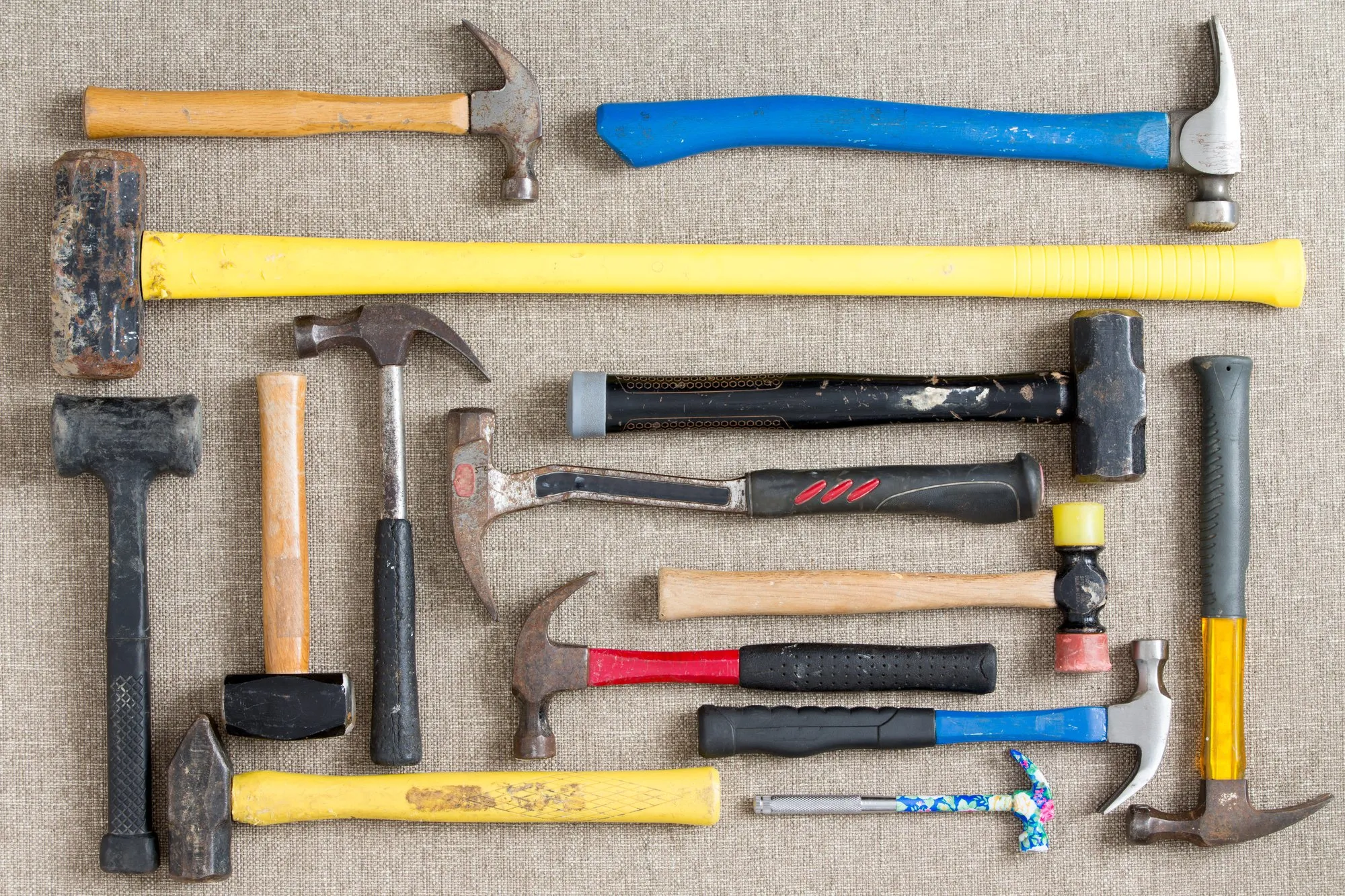Introduction to Hammers: A Tool for Every Task
Hammers are one of the most essential tools used across a multitude of tasks, making them indispensable in both household and professional settings. From construction projects to delicate crafting, the hammer serves as a reliable instrument designed to deliver force efficiently. With a history that spans thousands of years, the hammer has evolved in design and application but has always maintained its fundamental role in driving objects, breaking apart materials, and shaping various substances.
Traditionally, hammers have been employed in the construction of buildings and infrastructure, allowing laborers to drive nails, join materials, and shape heavy components. In the realm of home improvement, a hammer is a quintessential item found in most toolboxes, facilitating repairs and DIY projects. Its versatility makes it suitable not only for construction but also for tasks such as woodworking, metalworking, and even electrical work, where precision and control are paramount.
In crafting, the hammer showcases its capable nature in various applications, including jewelry making and art. Different types of hammers provide artisans with choices tailored to specific materials and desired outcomes, reaffirming the tool’s adaptability to diverse contexts. The presence of specialized hammers further broadens its utility, ensuring that every task can be tackled effectively, regardless of the industry.
Understanding the basic functions of hammers lays the groundwork for a deeper exploration into their unique varieties. Each type is crafted with a specific purpose in mind, enhancing the efficiency and effectiveness of the task at hand. As we proceed, we will delve into five distinct types of hammers, illuminating their individual characteristics and uses, thereby equipping readers with the knowledge necessary to select the appropriate hammer for their unique requirements.
Claw Hammer: The All-Purpose Champion
The claw hammer stands out as one of the most versatile tools in any homeowner’s toolkit. This hammer is specifically designed with dual functionality, enabling it to efficiently drive nails into a variety of materials while also providing the capability to remove them when necessary. Its unique structure features a flat, smooth striking face on one end, which is used for hammering, and a forked claw shape on the other end that is ideal for pulling out nails. This combination makes the claw hammer an essential instrument for various home improvement tasks.
Among its many uses, the claw hammer is commonly employed in projects such as hanging pictures, assembling furniture, or conducting DIY repairs around the house. By simply switching between the driving and prying functions, homeowners can easily put up shelves, secure loose panels, or dismantle items without the need for multiple tools. This efficiency saves time and reduces the overall effort required for typical home repairs.
The design of the claw hammer is another aspect that enhances its appeal. Available in various handle materials such as wood, fiberglass, and metal, these handles are crafted to provide comfort and durability. Wooden handles offer a traditional feel and shock absorbance, while fiberglass and metal options provide increased strength and resist wear and tear. The head construction of a claw hammer often includes hardened steel, which increases its longevity and effectiveness in driving nails into tougher materials.
In summary, the claw hammer is not merely a common tool; it is a fundamental component of a homeowner’s toolkit, combining practicality with exceptional design. Whether tackling straightforward tasks or intricate projects, the claw hammer remains a valuable ally in ensuring that work is completed efficiently and effectively.
Rubber Mallet: The Gentle Giant
The rubber mallet is a specialized hammer widely recognized for its ability to perform delicate tasks that require a softer touch. Unlike traditional metal hammers, which can create permanent damage to surfaces, the rubber mallet offers an ideal solution for various applications where gentleness and precision are paramount. Its soft exterior allows users to deliver a substantial amount of force without the risk of marring or denting the material being worked on.
In woodworking, for example, the rubber mallet is indispensable for driving wooden joints together without splintering or splitting the wood. It is particularly useful when assembling furniture, as its soft surface can strike the components without causing any cosmetic damage. This characteristic makes it a favored tool among carpenters and hobbyists alike, ensuring that the aesthetics of the final product remain intact while allowing for the necessary force to be applied.
Similarly, in tile installation, the rubber mallet plays a crucial role. When laying tiles, it is essential to ensure that the tiles are set evenly and securely without cracking them. By using a rubber mallet, tile setters can provide the required pressure to embed tiles firmly into adhesive without risking any breakage. This versatility of the rubber mallet extends to other tasks, such as gently tapping in dowels or adjusting parts during assembly work, where maintaining the integrity of the material is vital.
In addition to its functionality, the weight of a rubber mallet is another significant attribute. Typically weighing between 16 to 32 ounces, it provides a balance between lightness and sufficient mass to facilitate effective striking. Furthermore, its inherent impact-absorbing qualities enhance its usability, making it a reliable tool in situations where precision is necessary, such as carpentry, crafts, and home improvement projects.
Sledgehammer: The Heavy-Duty Powerhouse
The sledgehammer is a formidable tool known for its ability to generate significant force, making it an invaluable asset in demolition and heavy-duty tasks. Typically featuring a long handle and a large, heavy head, this hammer is designed to deliver powerful strikes that can break through tough materials such as concrete, brick, and stone. Its primary applications extend beyond mere demolition; it is frequently employed to drive stakes into the ground for fencing or other construction purposes and to tackle various material handling jobs that require additional force.
When considering the use of a sledgehammer, one must be mindful of several safety precautions. Proper grip and posture are essential to avoid injuries. Users should ensure their footing is stable, and the surrounding area is clear of bystanders to prevent accidents from debris. Wearing protective gear such as gloves, safety goggles, and steel-toed boots can also enhance safety and decrease the risk of injury. It is recommended to practice control and precision rather than relying solely on raw force, as improper usage can lead to severe injuries.
Selecting the appropriate weight of a sledgehammer is crucial based on the specific project at hand. Sledgehammers typically range from 2 to 20 pounds, with lighter models suited for smaller demolition tasks or delicate materials. In contrast, heavier models are more appropriate for substantial demolition projects and tasks that require driving stakes into hard ground. Ultimately, understanding the scope of your project will guide the selection of the most suitable sledgehammer, thereby maximizing efficiency and effectiveness in completing the job.
Tack Hammer: The Finishing Touch
The tack hammer, a specialized tool often overlooked, plays a crucial role in various projects, particularly in upholstery and crafting. This lightweight hammer is specifically designed for securing small fasteners such as tacks, staples, and small nails. Оften employed in delicate work, it provides the precision required for tasks that demand meticulous attention to detail.
One of the standout features of the tack hammer is its unique design. Typically weighing less than traditional hammers, the tack hammer enables greater control and minimizes the risk of damaging the materials being worked on. Its head is usually composed of lightweight materials, which not only aids in maneuverability but also ensures that users can work for extended periods without fatigue.
Adding to its functionality, many tack hammers come equipped with a magnetized surface. This feature proves invaluable when handling small fasteners, allowing users to effortlessly pick up multiple tacks or staple fasteners without fumbling. The magnet acts as a guiding mechanism, helping artisans position fasteners with precision and accuracy, particularly in tight spaces or intricate designs.
Tack hammers are extensively utilized in upholstery work, where securing fabric to frames or other surfaces is essential. Crafting enthusiasts also relish using tack hammers for various projects, including art installations, woodworking, and fabric crafts. Their versatility ensures that they are a staple in any tool set, particularly for those who engage in detail-oriented tasks.
In conclusion, the tack hammer’s specialized purpose and unique design make it an essential tool in various projects involving small fasteners. Its lightweight construction and magnetized surface greatly enhance its effectiveness, making it a preferred choice for professionals and hobbyists alike in detailed applications.
Conclusion
In the exploration of various types of hammers, we have examined five distinct options: the claw hammer, the sledgehammer, the ball-peen hammer, the rubber mallet, and the framing hammer. Each hammer is designed with specific features that cater to particular tasks, making the selection of the right tool crucial for successful projects. For instance, the claw hammer is ideal for general household tasks, such as driving in and removing nails, while the sledgehammer excels in heavy-duty applications, like breaking concrete or driving posts into the ground.
The ball-peen hammer, with its rounded head, serves a unique role in metalworking, making it the preferred choice for tasks involving shaping and striking metal surfaces. On the other hand, the rubber mallet proves invaluable when a softer strike is required to avoid damaging more delicate materials, making it a fundamental tool in numerous home improvement and crafting projects. Finally, the framing hammer is designed for constructing wooden structures, providing the speed and power needed for large-scale applications.
Selecting the appropriate hammer not only enhances efficiency but also plays a significant role in ensuring safety during any project. Using the right tool reduces the risk of accidents and minimizes wear and tear on both the hammer and the material being worked on. Therefore, it is advisable for DIY enthusiasts to invest in a well-diversified toolkit that incorporates these various types of hammers. Doing so will empower individuals to tackle a wider range of tasks with confidence, ultimately enhancing their DIY capabilities, both at home and in more complex endeavors.
If you’re interested in purchasing the item you seek, please click the link for additional details: #americanachoice.
https://amzn.to/3SBN3Oy
AFFILIATE DISCLOSURE: I am an affiliate for this company, I am not a paid employee.
I may receive a commission if you click a link on this page and choose to purchase something.
You can rest assured I will only share things I believe in and will be valuable to you.



